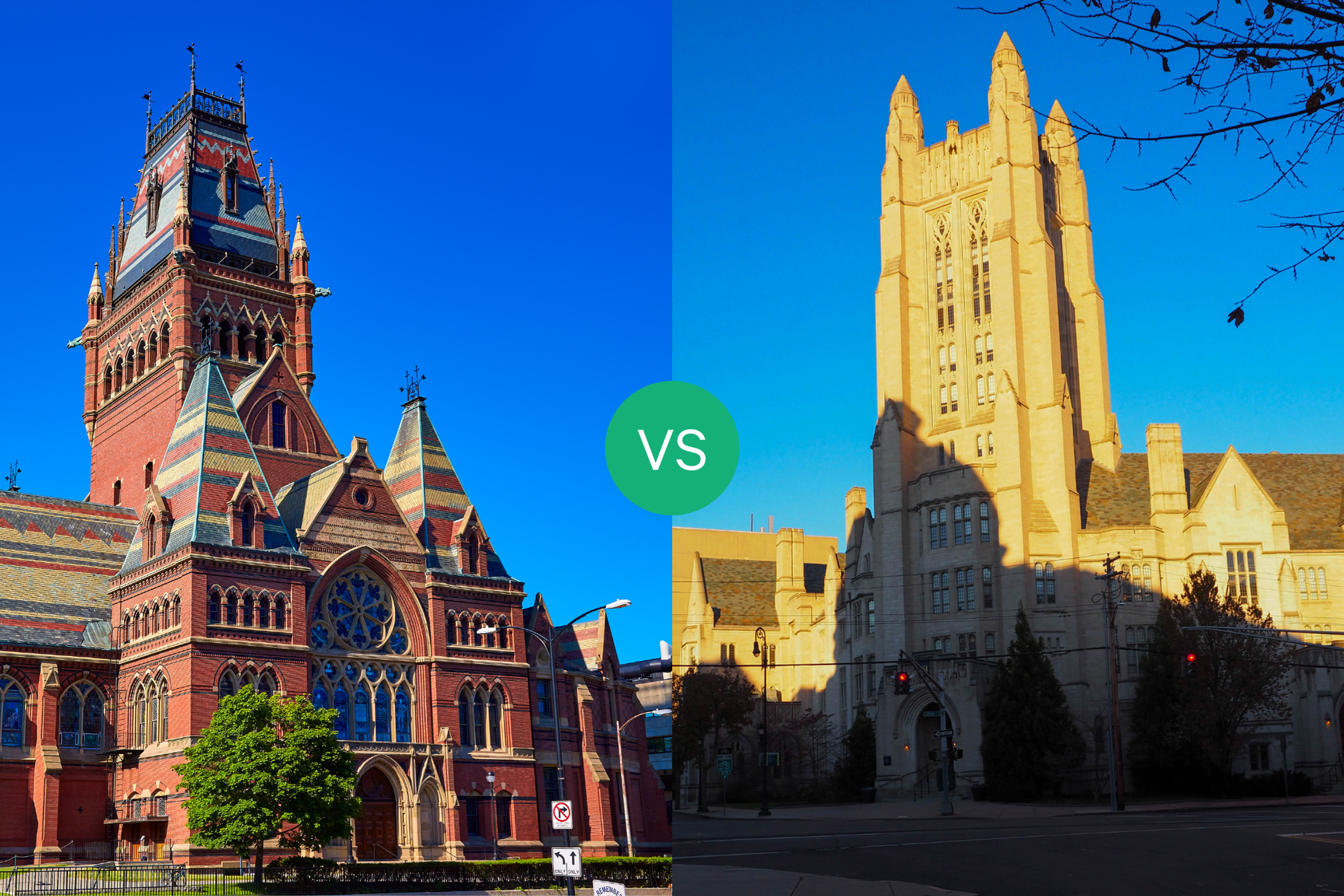Law School Application Deadlines (T20 Programs)
Get a clear, concise overview of early and regular decision deadlines for the 20 top law schools, along with insights on how to plan your JD applications effectively. This guide is tailored for ambitious students and young professionals aiming for top-tier law programs.
Posted June 24, 2025

Join a free event
Learn from top coaches and industry experts in live, interactive sessions you can join for free.
Table of Contents
Applying to any graduate program can be confusing with so many different moving pieces and deadlines. This guide outlines the 2024 JD application cycle for leading programs, helping you stay on track with your law school application timeline.
Overview of the Law School Admissions Cycle
The vast majority of law school application cycles are based on a rolling system of acceptances. Applications can be submitted anytime during several months and are reviewed as they come in. The admissions cycle starts in the fall of the year before you plan to attend law school and lasts until the spring when decisions are made and acceptances are extended.
Early Decision Deadlines
Most programs offer an official early decision deadline through which students can receive their acceptance/rejection letters earlier than other applicants. These are usually binding, meaning if the student is admitted through early decision, they are committed to attending, and some schools have strict application deadlines that must be adhered to. Others have a more informal early decision applicant-action deadline. For example, Columbia Law School states that if the application is submitted before December 31, the decision will be released before March; if the application is submitted by the regular deadline on February 15, the decision will not be released until the end of April. As you decide on your top choice programs, make sure that you understand their deadlines and have an idea of when you’ll apply.
When Should You Apply to Law School?
To maximize your chances of admission, it's important to apply as early as possible. Submitting your application early often opens up more available seats and increases your chances of securing scholarships and other benefits. Applying earlier can significantly enhance your opportunity to secure a spot in your desired program. Plus, an early application shows your commitment and enthusiasm for the school, which can positively influence the admissions committee’s decision.
Prioritize applying early to the schools you most want to attend and those that are the most competitive. Then, as the cycle continues, you can submit your application later to the schools that are less competitive or that aren’t at the top of your list.
Law School Application Timeline
Several steps should be taken before even starting the application process. Many students start studying for the LSAT before even looking at the application. It’s a good idea to take the LSAT (or GRE) at least a couple of months before you want to submit your application. This gives you a buffer to retake it should you not get your target score and enough time to think through essay prompts, reach out to potential recommenders, and polish your resume.
After the LSAT, the first step of the admissions process in most law schools is to research different law programs and their requirements. This includes looking at things like the school’s curriculum, location, admissions criteria, and cost, among other factors. It’s important to choose a school that aligns with your professional and personal aspirations.
To learn more, read: When is the Right Time to Apply to Law School?
Once you have a list of schools that you’re interested in, you’ll need to prepare your application materials. Generally, this includes transcripts, resumes, fit/character information, and personal statements/essays. Which law school application process parts you decide to tackle first will depend on your candidacy but many applicants choose something similar to the following timeline.
3-6 Months Before Law School Application Deadlines:
- Take the LSAT and choose an appropriate test date that aligns with your application timeline
- Research programs and decide where you want to apply
- Outline your application strategy
3 Months Before Law School Application Deadlines:
- Reach out to potential recommenders
- Review your LSAT test scores and ensure they meet the requirements of your target schools
- Start brainstorming your application themes and essay responses
- Research scholarships and financial aid deadlines
1-3 Months Before Law School Application Deadlines:
- Draft and edit your statements
- Ensure you have a balanced list of schools, including reach, match, and safety schools
- Support recommenders
1 Month Before Law School Application Deadlines:
- Follow up with recommenders
- Get feedback on essays, continue to review and edit
- Edit and polish your resume
- Fill out additional information and optional materials
1 Week After the Law School Application Deadlines:
- Celebrate!
- Begin preparing for interviews
Once the schools receive your application, they'll review it and decide whether to invite you for an interview. For some law schools, interviews are required for admission while others are optional. Regardless of the rolling admissions process, it's a good idea to take advantage of any opportunity to speak with someone from the admissions committee.
Finally, after the interview process is complete, the schools will make their decisions and send out acceptances and rejections. If you're admitted to multiple schools, you'll need to choose which one you want to attend, declare your intent to enroll, and submit a deposit.
2024-2025 JD Application Deadlines of the T20 Law Schools
Here are all of the deadlines for the top 20 law schools. Three of the programs–namely Yale, Stanford, and Harvard–do not offer an early decision option. Everyone must apply before the same deadline.
Regular Decision-Only Programs
| School | Applications Open | Applications Can Be Submitted | Application Deadline |
|---|---|---|---|
| Yale Law School | September 1, 2024 | October 1, 2024 | February 15, 2025 |
| Stanford Law School | September 15, 2024 | September 15, 2024 | February 15, 2025 |
| Harvard Law School | September 15, 2024 | February 15, 2025 | February 15, 2025 |
Early-Decision Programs
These programs, on the other hand, do offer an early decision deadline. As mentioned, this means that the application must be submitted earlier but that decisions will also be released earlier. Almost every school's early decision program is binding; in other words, if the student is admitted, they must withdraw their other applications and attend that program. Early decision deadlines are the most useful if there is a specific program that you want to attend above all others.
| School | Applications Open | Early Decision Deadline | Regular Decision Deadline |
|---|---|---|---|
| University of Chicago Law School | September 1, 2024 | December 1, 2024 | March 1, 2025 |
| University of Pennsylvania Carey Law School | September 1, 2024 | November 15, 2024 (Round 1) / January 7, 2025 (Round 2) | March 1, 2025 |
| Duke University School of Law | September 1, 2024 | November 3, 2024 (Round 1) / January 5, 2025 | February 15, 2025 |
| New York University School of Law | September 1, 2024 | November 15, 2024 | February 15, 2025 |
| Columbia Law School | September 1, 2024 | November 15, 2024 | February 15, 2025 |
| University of Virginia School of Law | September 1, 2024 | March 1, 2025 | March 1, 2025 |
| Northwestern University Pritzker School of Law | September 1, 2024 | November 15, 2024 | February 15, 2025 |
| University of California, Berkeley School of Law | September 1, 2024 | November 15, 2024 | February 15, 2025 |
| University of Michigan Law School | August 28, 2024 | November 15, 2024 | February 28, 2025 |
| Cornell Law School | September 1, 2024 | January 1, 2025 | March 1, 2025 |
| University of California, Los Angeles School of Law | September 1, 2024 | November 15, 2024 | February 1, 2025 |
| Georgetown University Law Center | September 5, 2024 | March 1, 2025 | March 1, 2025 |
| University of Minnesota Law School | September 1, 2024 | December 31, 2024 | March 1, 2025/ June 1, 2025 |
| University of Southern California Gould School of Law | September 1, 2024 | November 15, 2024 | April 1, 2025 |
| University of Texas at Austin School of Law | September 1, 2024 | November 1, 2024 | March 1, 2025 |
| Vanderbilt University Law School | September 1, 2024 | November 1, 2024 | April 1, 2025 |
| University of Georgia School of Law | September 1, 2024 | December 1, 2024 | June 1, 2025 |

Law School Resume Template & Example
Use this template and Harvard Law School resume example to make sure you have the strongest possible application
Note: The University of Virginia and Georgetown University allow students to apply as Early Decision candidates before March 1 for faster admissions decisions. Northwestern University recommends submitting application materials by November 1 for interview consideration. The University of Minnesota has a priority deadline of March 1 specifically for scholarship considerations. USC Gould School of Law advises applicants to submit their applications before February 1 to avoid potential disadvantages in the admissions process.
These law schools, on the other hand, do offer an early decision deadline. As mentioned, this means that the application must be submitted earlier but that decisions will also be released earlier. Almost every school's early decision program is binding; in other words, if the student is admitted, they must withdraw their other applications and attend that school of law or program. Early decision deadlines are the most useful if there is a specific program that you want to attend above all others.
The Bottom Line
Applying to law school can be overwhelming, but with the right preparation, you can improve your chances of getting in. Start early, research schools, and make sure your application is strong and submitted on time. Applying early often gives you a better chance of being accepted. Working with an expert coach can also help you create a standout application. Whether you're aiming for a top law school or looking for a more affordable option, staying organized and focusing on your strengths will help you succeed.
Get Into Law School With the Help of an Expert
As you put together your law school applications, the best thing you can do to make them as compelling as possible is to work one-on-one with an expert coach. Below are three of our top law school coaches. They are graduates of some of the best programs in the country and will be able to help you navigate the difficult process.
As you put together your applications, here are a few more resources you may find helpful:
- A Comprehensive Guide to HBCU Law Schools
- How Many Law Schools Should You Apply To?
- Acceptance Rates & Class Profiles of the T14 Law Schools
- LSAT vs. GRE for Law School–Which to Take and How to Ace Both
- How to Get Into a T14 Law School
- Everything You Need to Know About LSAC and the CAS Report for Law School
- How to Write a Compelling Law School Personal Statement
FAQs
What is the latest you can apply for law school?
- Most law schools have final application deadlines between February and March, but some extend into June. It’s best to check each school's specific deadline.
What is the best time to apply for law school?
- Applying in the fall, as soon as applications open, maximizes your chances due to rolling admissions when more seats are available.
What is the latest age to go to law school?
- There’s no age limit; students of all ages, including those in their 40s and beyond, attend law school.
When can you apply to Harvard Law School?
- Harvard Law School applications typically open in early September, with a final deadline in February.
Browse hundreds of expert coaches
Leland coaches have helped thousands of people achieve their goals. A dedicated mentor can make all the difference.
















